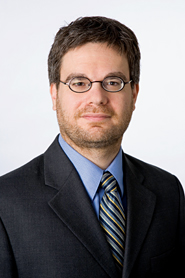Academics and industry veterans mingled and shared ideas at the inaugural Pragma “Quantference” in New York City last week, discussing some of the latest developments affecting quantitative trading.
Among the topics discussed were costs associated with order routing and latency, as well as how document mining strategies might help traders in the future.
Welcoming about 100 attendees at the conference last Thursday, Pragma Securities’ co-founder and chief executive officer David Mechner said that because there is such a close connection in finance between ideas and the value embedded in those ideas, people working in finance often tend toward greater levels of secrecy. However, he urged participants to engage in an open exchange of ideas for the benefit of all.

In a presentation on order routing, Pragma’s director of research Eran Fishler urged the buyside to look at both the explicit and implicit costs of various venues in order to reduce the overall costs of a trade. He said smart order routers consider the explicit cost of a venue but need to also weigh the implicit costs of having an order fall at the end of a queue, which could hurt performance when stocks move against the trader.
SORs will always route to the biggest rebate or the lowest fee, Fishler said, but sometimes it makes sense to pay a little bit more in order to get to the front of the line and have an order filled as quickly as possible.
“What the buyside should care about, if they use a pass-through model, is the all-in costs,” Fishler said. “For a very volatile stock, you definitely want to hop the queue.”
The paper Fishler presented will be made available to the public in coming weeks, Pragma said.
Ciamac Moallemi, an associate professor in the Graduate School of Business at Columbia University, gave his own talk on the cost of latency, arguing that execution speed is important for everyone, pension plans as well as high-frequency traders.
Moallemi noted that prior to 1980, the typical latency for a trade on the New York Stock Exchange was about two minutes, but that was when the period between trades for a stock might be around 20 minutes. As recently as five years ago, latency was measured in hundreds of milliseconds, a speed that seems incredibly slow by today’s standards.
According to Moallemi, the value of decreasing latency from 500 milliseconds to a single millisecond is about 20 basis points. For an HFT trying to squeeze out every last mil from a trade, this certainly justifies the increased expense of investing in low-latency technology.
For cost-efficient institutional investors, paying to reduce latencies similarly makes sense. But the less frequently investors trade and the more they pay in commissions, the less economic sense it makes for them to shell out millions of dollars in order to shave a few basis points.
“Latency is important to any investor, but how important it is depends on cost structure,” Moallemi said.
In the final talk at the conference, Associated Press reporter Jonathan Stray spoke about his own work leading development of an open-source document mining system. While Stray’s work has involved extracting news information from thousands of pages of declassified government documents, he said similar strategies could be used to glean information from other sources, such as company filings with the Securities and Exchange Commission.
The SEC’s electronic database EDGAR is very helpful in identifying information on specific companies, Stray said, but it is impossible as a practical matter to wade through all of the filings in the system at once.
“Just to read all the EDGAR filings per day, you would need 20 people full-time,” Stray said. “And that’s without analyzing it at all.”
Stray said computers can help to sort through reams of information and identify common themes that occur in multiple documents. He also gave a live demonstration of a visualization tool that can help journalists—and potentially traders—to track important threads that occur in a large number of disparate documents.



